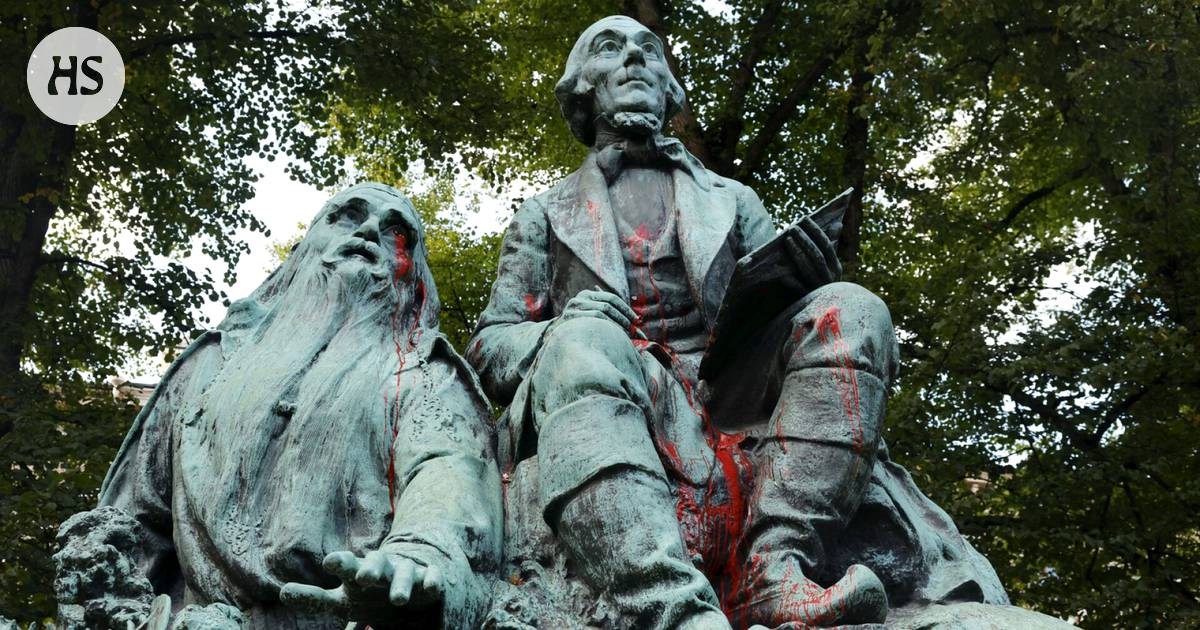Vandalism|Helsingin Sanomat was in contact with the anonymous collective through an Instagram account.
Helsinki The Ruškiemustu collective, made up of Karelian activists, is behind the vandalism of the Elias Lönnrot statue in Kamppi.
HS was in contact with the anonymous collective on its Instagram account. Through the application’s message service, Ruškiemustu replied that the collective has vandalized Lönnrot’s statue. On Lönnrot’s statue, the collective wrote “colonialist” in red.
The name of the collective refers to the colors of Karelia: red and black.
Lived in the 19th century Elias Lönnrot is especially known Kalevala as an assembler. The work has been given the status of Finland’s national epic.
Ruskiemusta tells HS that the motive for knocking down the statue is to spark a public debate about “at whose expense” Kalevala has been used “in the creation of a national idea that understands Finnish culture as homogenous”.
The collective says they want to “clear a space for a discussion in which Finland’s role as an oppressor could also come to the fore”.
The collective says that the term “colonialist” refers both to cultural belonging and to the fact that “colonialist ways of thinking” also apply to intangible heritage.
“(Kalevala) has played an important role in the Karelianist movement and in the birth of the Greater Finland ideal, whose worldview sees Karelianness as an underdeveloped Finnishness left in the past, and not as its own, rich and vibrant culture,” the collective says.
The collective’s goal is, among other things, to highlight themes and problems important to Karelian people and to bring the perspectives of “other cross-cutting minorities” to the left-wing movement.
Ruškiemustu describes itself on its Instagram page as a Karelian anti-colonialist and anti-fascist collective, whose members are all Karelians.
In the English-language publication called Manifesto, it is said that the people who belong to the collective are third, second and first generation refugees, evacuees and immigrants in different cities around Finland.
Lönnrot wrote Kalevala based on the poetic material he recorded. He recorded the most poems from the areas where Karelian proper and the eastern and southeastern dialects of Finland are spoken, writes the academy researcher of the Finnish Literature Society Kati Kallio in his blog post.
Especially in social media, there has been a discussion in recent years From the Kalevala as a cultural origin and the Karelian language from a weak position in Finland.
The Kalevala-themed sculpture depicting Elias Lönnrot was made by a sculptor Emil Wikström. The sculpture was unveiled in 1902 and is part of the art collection of the city of Helsinki managed by the Helsinki Art Museum HAM.
The conservator of the Helsinki Art Museum commented to HS earlier that the costs of cleaning Lönnrot’s statue may increase to thousands of euros. STT reported on Tuesday that a criminal complaint has been filed for defacing the statue. According to the police, the mess is being investigated as an act of damage.
